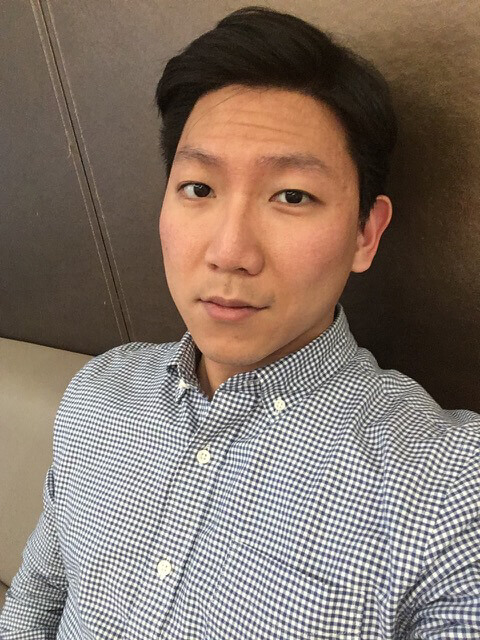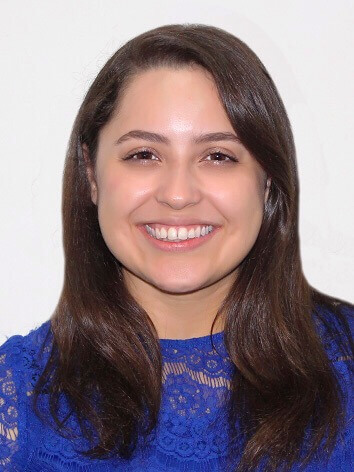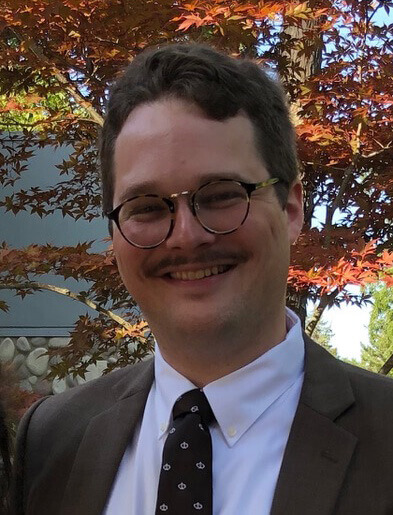September 16, 2019
Purdue Systems Collaboratory announces the 2019 Systems Fellows
Purdue Systems Collaboratory has selected three PhD students for the second cohort of Systems Fellows. The assistantship is meant to support outstanding graduate students who conduct research toward addressing a complex systems problem or advancing systems science.
The three fellows will present their work from 11:30 a.m. to 1 p.m. Sept. 23 in Wilmeth Active Learning Center, Room 2088. The event also will include a talk by Barrett Caldwell, professor of industrial engineering, who will discuss “Leveraging Engagement for Research Impact." Lunch is provided; RSVP here. The event is open to students, faculty and staff from all colleges.
The new fellows and their projects:
 Samuel Park
Samuel Park
Samuel Park, PhD student, Lyles School of Civil Engineering
* Advisors: David J. Yu, assistant professor of civil engineering and political science, and Seungyoon Lee, associate professor in the Brian Lamb School of Communication.
* Project title: Effects of Social Media on the Voluntary Sharing Behavior for Disaster Relief
* Project description: Emergence of local help networks for disaster relief (e.g., voluntary sharing of water, food, etc.) is observed worldwide and is considered a key to building community disaster resilience. An important new trend in this regard is the increasing use of social media among disaster-affected people in disaster relief situations. Social media can potentially help voluntary sharing behavior by facilitating information exchange in two ways: the matching of help-seekers and help-donors over wider social network and improved situational awareness about the level of inequality in relief resources among people.
It is widely assumed that the use of social media is beneficial to the performance of local help networks. However, I challenge this assumption and critically examine how behavioral aspects of social media and underlying contextual factors affect the macro-level performance of such local help networks. In particular, I examined the influences of two forms of trade-offs: 1) while the use of social media expands the spatial scale of relief sharing interactions, it can also dilute the strength of pro-social preferences and, thus, sharing behavior among potential help-donors and 2) while the use of social media enhances people’s situational awareness, it can also undermine the sharing behavior of help-donors with relatively less relief resources in hand.
In this study, I developed and analyzed an agent-based model of voluntary local help networks to explore effects of these two trade-offs and their interaction on the level of community resilience. I used the model to conduct computational experiments to compare the outcomes under various physical and social conditions. My results reveal that the use of social media generally enhances the quantity, equity, and duration of voluntary relief sharing but not always. Information exchange through social media is important not only because of the increased matching possibility between help-donors and help-seekers but also because of the enhanced situational awareness that promotes inequality-aversion.
 Herta Paola Montoya Rodriguez
Herta Paola Montoya Rodriguez
Herta Paola Montoya Rodriguez, PhD student, Lyles School of Civil Engineering
* Advisors: Shirley J. Dyke professor of mechanical engineering, and David Richard Johnson, assistant professor of industrial engineering and political science.
* Project title: Killer Buildings Hazard Mitigation
* Project description: Densely populated regions, such as the City of Los Angeles plus many cities around the world, are at risk due to high seismic activity and the fact that many of our buildings were constructed before engineers were able to quantify how extreme those conditions could be. In particular, older concrete buildings, which are ubiquitous for residential purposes, make our communities especially vulnerable to seismic action. In the City of Los Angeles alone nearly 1,400 older concrete buildings exist that were built and designed before adequate code standards, termed killer buildings. Their design lacks proper seismic detailing to perform adequately, meaning that they are highly vulnerable to seismic activity, and may result in major life and property losses.
The City of Los Angeles recently imposed an ordinance to mandate retrofit of concrete buildings constructed before 1977, to reduce the risk of injury and loss of life. But there is little guidance for owners or engineers to determine which cases create the most risk to their communities. Furthermore, there is a need to analyze the cost and benefits on society and economy related to policy interventions encouraging action for killer buildings. To gain better understanding of the workings of risk mitigation and resilience on communities, the complex interplay between public policy and infrastructure needs to be examined. Killer buildings hazard mitigation, presented herein, will analyze the interactions between cyber-physical structural assessment, seismic risk mitigation strategies, professional code provisions, local authorities and policy decisions to make our communities safer.
 Henry Seeger
Henry Seeger
Henry Seeger, PhD student, Brian Lamb School of Communication
* Advisors: Seungyoon Lee, associate professor in the Brian Lamb School of Communication, and Linda Stalker Prokopy, professor of natural resources social science, Department of Forestry and Natural Resources
* Project title: Community Resilience and Response Following PFAS Contamination in Parchment, MI
* Project description: This study will investigate community and socio-ecological resilience in the wake of the discovery of PFAS contaminations in the city of Parchment, Michigan. On July 26, 2018, samples from the city’s municipal water system showed PFAS contamination at a level of 1,587 parts per trillion, which was over 20 times the U.S. Environmental Protection Agency’s established safe limit for water. This research will integrate ethnographic observation with social network analysis in a transformative mixed method design to gain insights into the structure and function of human-water systems. Results from this research will help Parchment better cope with the disruption to its water resources, as well as more broadly increase the capacity of communities affected by water contamination to effectively organize and respond to these events. More broadly, this research will provide needed insight into the ways that water-related crisis events drive emergent self-organization at community and socio-ecological levels.
For more information, contact Boshra Afra, the collaboratory’s research and education director, at afra@purdue.edu.

